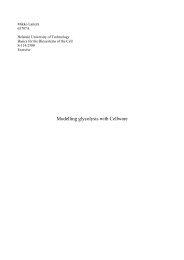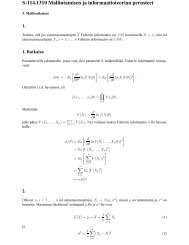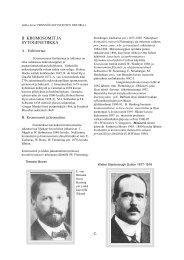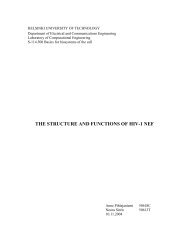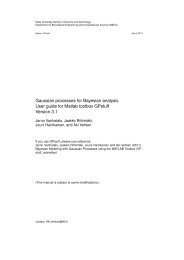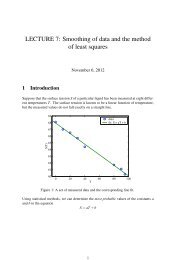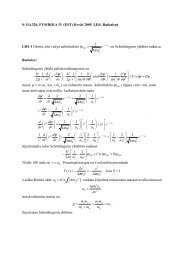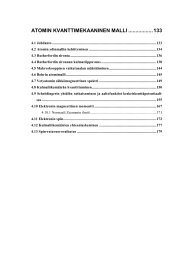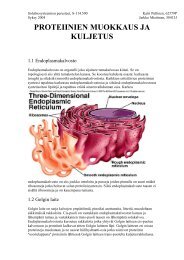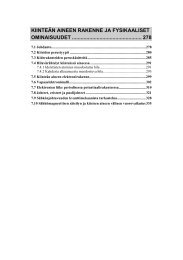LECTURE 3: Polynomial interpolation and numerical differentiation
LECTURE 3: Polynomial interpolation and numerical differentiation
LECTURE 3: Polynomial interpolation and numerical differentiation
You also want an ePaper? Increase the reach of your titles
YUMPU automatically turns print PDFs into web optimized ePapers that Google loves.
Numerical evaluation<br />
The obtained formula<br />
f ′ (x)≈ 1 [ f(x+h)− f(x−h)]<br />
2h<br />
− 1 [ f(x+2h)−2 f(x+h)+2 f(x−h)− f(x−2h)]<br />
12h<br />
can be used in the Richardson extrapolation algorithm to speed up the convergence. As<br />
an example, the algorithm is applied to evaluate f ′ at x=1.2309594154 for f(x)=sin(x)<br />
<strong>and</strong> h=1.<br />
We obtain the following output:<br />
D(n,0) D(n,1) D(n,2) D(n,3) D(n,4)<br />
0.32347058<br />
0.33265926 0.33572215<br />
0.33329025 0.33350059 0.33335248<br />
0.33333063 0.33334409 0.33333365 0.33333335<br />
0.33333317 0.33333401 0.33333334 0.33333334 0.33333334<br />
Using the original formula (first term of the equation above)<br />
D(n,0) D(n,1) D(n,2) D(n,3) D(n,4)<br />
0.28049033<br />
0.31961703 0.33265926<br />
0.32987195 0.33329025 0.33333232<br />
0.33246596 0.33333063 0.33333332 0.33333333<br />
0.33311636 0.33333317 0.33333333 0.33333334 0.33333334<br />
Notice that the first column of the first output has the same values as the second column<br />
of the second output! This is a good example of how the Richardson algorithm works in<br />
refining the approximation.




